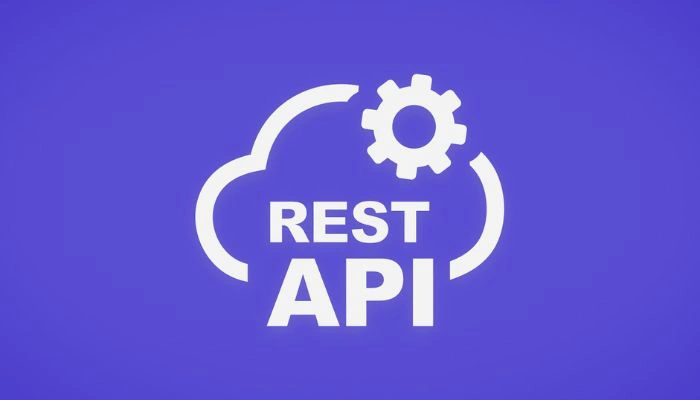Environment Automation On Demand DevOps Streamlining Software Delivery Processes
Environment automation is a crucial aspect of DevOps methodology that is gaining popularity among businesses today. It involves automating repetitive and manual tasks to create on-demand environments for testing and delivering applications. By doing so, businesses can reduce the time cycle for testing and delivering applications, which is crucial in today's fast-paced business environment.

On-demand environment automation offers several benefits, including faster time-to-market, increased efficiency, and cost savings. It eliminates the need for manual intervention, which can be time-consuming and error-prone. With on-demand environment automation, businesses can quickly create and provision new environments, scale up or down as needed, and ensure that the environments are always up-to-date and consistent. This helps to reduce the risk of errors and improve the quality of applications.
Key Takeaways
- Environment automation is a crucial aspect of DevOps methodology that involves automating repetitive and manual tasks to create on-demand environments for testing and delivering applications.
- On-demand environment automation offers several benefits, including faster time-to-market, increased efficiency, and cost savings.
- With on-demand environment automation, businesses can quickly create and provision new environments, scale up or down as needed, and ensure that the environments are always up-to-date and consistent.
The Essence of Environment Automation in DevOps

As a DevOps engineer, I understand the importance of environment automation in the DevOps lifecycle. Environment automation is the practice of automating the creation, configuration, and management of environments for development, testing, and production. It enables developers and operations teams to quickly provision and configure environments, reducing the time it takes to deliver software to customers.
Understanding Environment Automation
Environment automation is a key component of DevOps and is essential for continuous integration and continuous delivery (CI/CD) pipelines. It enables teams to create and manage environments on-demand, reducing the time it takes to test and deploy software. With environment automation, teams can easily create and destroy test environments, reducing the risk of conflicts and errors.
Infrastructure-as-code (IaC) is a critical component of environment automation. IaC enables teams to define and provision infrastructure using code, making it easier to manage and automate. With IaC, teams can easily create and manage environments, reducing the time it takes to deploy software.
Role of DevOps in Environment Automation
DevOps plays a critical role in environment automation. DevOps engineers are responsible for designing, implementing, and maintaining CI/CD pipelines that enable teams to quickly and reliably deliver software. They work closely with development and operations teams to ensure that environments are provisioned and configured correctly.
Automation is a key component of DevOps and is essential for environment automation. DevOps engineers use tools and technologies to automate the creation, configuration, and management of environments. This reduces the time it takes to deliver software to customers and ensures that software is tested thoroughly before it is released.
In conclusion, environment automation is a critical component of the DevOps lifecycle. It enables teams to quickly and easily create and manage environments, reducing the time it takes to deliver software to customers. DevOps plays a critical role in environment automation, designing and implementing CI/CD pipelines that enable teams to deliver software quickly and reliably.
Impacts and Benefits of On-Demand Environment Automation

As a DevOps professional, I have seen firsthand the numerous benefits of on-demand environment automation. In this section, I will discuss how this approach can improve productivity, enhance quality, boost agility, and increase effectiveness.
Improving Productivity and Speed
One of the most significant benefits of on-demand environment automation is the ability to improve productivity and speed. By automating the process of creating and managing environments, teams can free up valuable time and resources that can be used to focus on more critical tasks. This can lead to faster development cycles and quicker time-to-market for products and services.
Enhancing Quality and Time-to-Market
On-demand environment automation can also enhance quality and time-to-market. By automating the testing and deployment of environments, teams can ensure that each environment is consistent and reliable. This can help to prevent errors and reduce the risk of downtime, which can lead to increased customer satisfaction and loyalty.
Additionally, by reducing the time it takes to create and manage environments, teams can speed up the development process, allowing products and services to be released to market more quickly.
Boosting Agility and Effectiveness
Another benefit of on-demand environment automation is the ability to boost agility and effectiveness. By automating the process of creating and managing environments, teams can quickly and easily scale up or down as needed. This can help to ensure that resources are being used efficiently and effectively, which can lead to increased agility and responsiveness to changing market conditions.
Furthermore, on-demand environment automation can help to reduce the risk of errors and downtime, which can lead to increased effectiveness and improved business outcomes.
In summary, on-demand environment automation can have a significant impact on productivity, quality, time-to-market, agility, and effectiveness. By automating the process of creating and managing environments, teams can free up valuable time and resources, enhance quality and time-to-market, and boost agility and effectiveness.
Implementation and Management of Environment Automation

As I implement and manage environment automation in my DevOps process, there are several key areas that I focus on to ensure that everything runs smoothly. These include deployment and testing, provisioning and management, and addressing security and maintenance concerns.
Deployment and Testing
One of the most critical aspects of environment automation is ensuring that deployments and testing are carried out efficiently and effectively. By automating the deployment process, I can ensure that the application is deployed consistently across all environments, reducing the risk of human error and ensuring that the application is always up-to-date.
Automated testing is also an essential part of the process, allowing me to quickly and accurately test the application to ensure that it is working as expected. By automating testing, I can ensure that all tests are run consistently and that any issues are identified and addressed quickly.
Provisioning and Management
Another critical area of focus when it comes to environment automation is provisioning and management. By automating the provisioning process, I can ensure that environments are created quickly and consistently, reducing the risk of human error and ensuring that all environments are set up correctly.
Once environments are provisioned, it's important to manage them effectively. This includes monitoring the environment to ensure that it is running correctly, identifying and addressing any issues that arise, and ensuring that the environment is always up-to-date.
Addressing Security and Maintenance
Finally, it's essential to address security and maintenance concerns when implementing and managing environment automation. This includes ensuring that all environments are secure and that any vulnerabilities are identified and addressed quickly.
In addition to security concerns, it's also important to ensure that all environments are properly maintained. This includes ensuring that all software is up-to-date, that backups are taken regularly, and that any issues are addressed quickly to minimize downtime.
Overall, implementing and managing environment automation is a critical part of the DevOps process. By focusing on deployment and testing, provisioning and management, and addressing security and maintenance concerns, I can ensure that my applications are always up-to-date, secure, and running smoothly.
Advanced Techniques and Tools for Environment Automation

As a DevOps engineer, I have found that environment automation is one of the most critical aspects of DevOps. It ensures that every environment is identical and can be created on demand, which is essential for continuous delivery. Here are some advanced techniques and tools that I recommend for environment automation.
Leveraging Ansible and Terraform
Ansible and Terraform are two popular tools that can be used for environment automation. Ansible is a configuration management tool that can automate the provisioning of servers, deployment of applications, and configuration of infrastructure. Terraform is an infrastructure as code tool that can be used to define and provision infrastructure resources.
By leveraging Ansible and Terraform, you can automate the entire process of creating and configuring environments. Ansible can be used to provision servers, configure them, and deploy applications, while Terraform can be used to provision infrastructure resources such as virtual machines, storage, and networking.
Utilizing Jenkins Pipeline and Kubernetes
Jenkins Pipeline is a powerful tool that can be used to automate the entire software delivery process, including environment creation. It allows you to define the entire delivery process as code, which can be versioned and automated. Kubernetes is a container orchestration platform that can be used to manage containerized applications.
By utilizing Jenkins Pipeline and Kubernetes, you can automate the entire process of creating and deploying applications, including environment creation. Jenkins Pipeline can be used to define the entire delivery process, while Kubernetes can be used to manage the deployment of containerized applications.
Advanced Automation System
An advanced automation system is a comprehensive system that can automate the entire software delivery process, from code commit to production deployment. It includes tools for environment automation, configuration management, continuous integration, continuous delivery, and more.
By utilizing an advanced automation system, you can ensure that every environment is identical and can be created on demand. It also ensures that every step in the delivery process is automated, which reduces the risk of human error and improves the speed and reliability of the delivery process.
In conclusion, environment automation is critical for DevOps, and leveraging tools such as Ansible, Terraform, Jenkins Pipeline, Kubernetes, and advanced automation systems can help automate the entire process of creating and configuring environments. By automating the environment creation process, you can ensure that every environment is identical and can be created on demand, which is essential for continuous delivery.
Frequently Asked Questions

What is environment management in DevOps?
Environment management in DevOps refers to the process of creating, configuring, and managing the various environments needed for software development, testing, and deployment. This includes development, staging, and production environments, as well as any other specialized environments required for specific testing or deployment scenarios.
What is the production environment in DevOps?
The production environment is the final stage in the software development lifecycle where the application is deployed and made available to end-users. This environment is typically the most critical and requires the highest level of stability and security to ensure that the application runs smoothly and securely.
What is on demand environment?
On-demand environment refers to the ability to quickly and easily provision new environments as needed, without the need for manual configuration or setup. This allows DevOps teams to rapidly create and deploy new environments for testing and development purposes, improving the speed and efficiency of the software development process.
What automation is focused on in DevOps?
Automation in DevOps is focused on automating as many manual processes as possible, including environment provisioning, testing, deployment, and monitoring. By automating these processes, DevOps teams can reduce errors, improve efficiency, and accelerate the software development lifecycle.
How can environment automation improve DevOps processes?
Environment automation can improve DevOps processes by reducing the time and effort required to provision new environments, improving the accuracy and consistency of environment configurations, and reducing the risk of errors and downtime. This allows DevOps teams to focus more on developing and testing new features, rather than managing environments.
What are the benefits of environment automation in DevOps?
The benefits of environment automation in DevOps include faster time-to-market for new features and applications, improved quality and consistency of software releases, reduced risk of errors and downtime, and increased efficiency and productivity of DevOps teams. Additionally, environment automation can help reduce costs associated with manual environment management and configuration.









